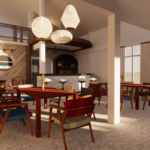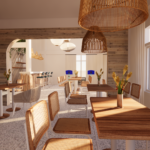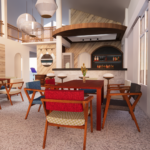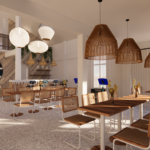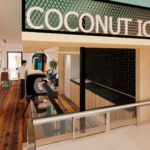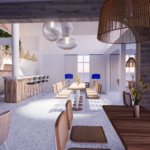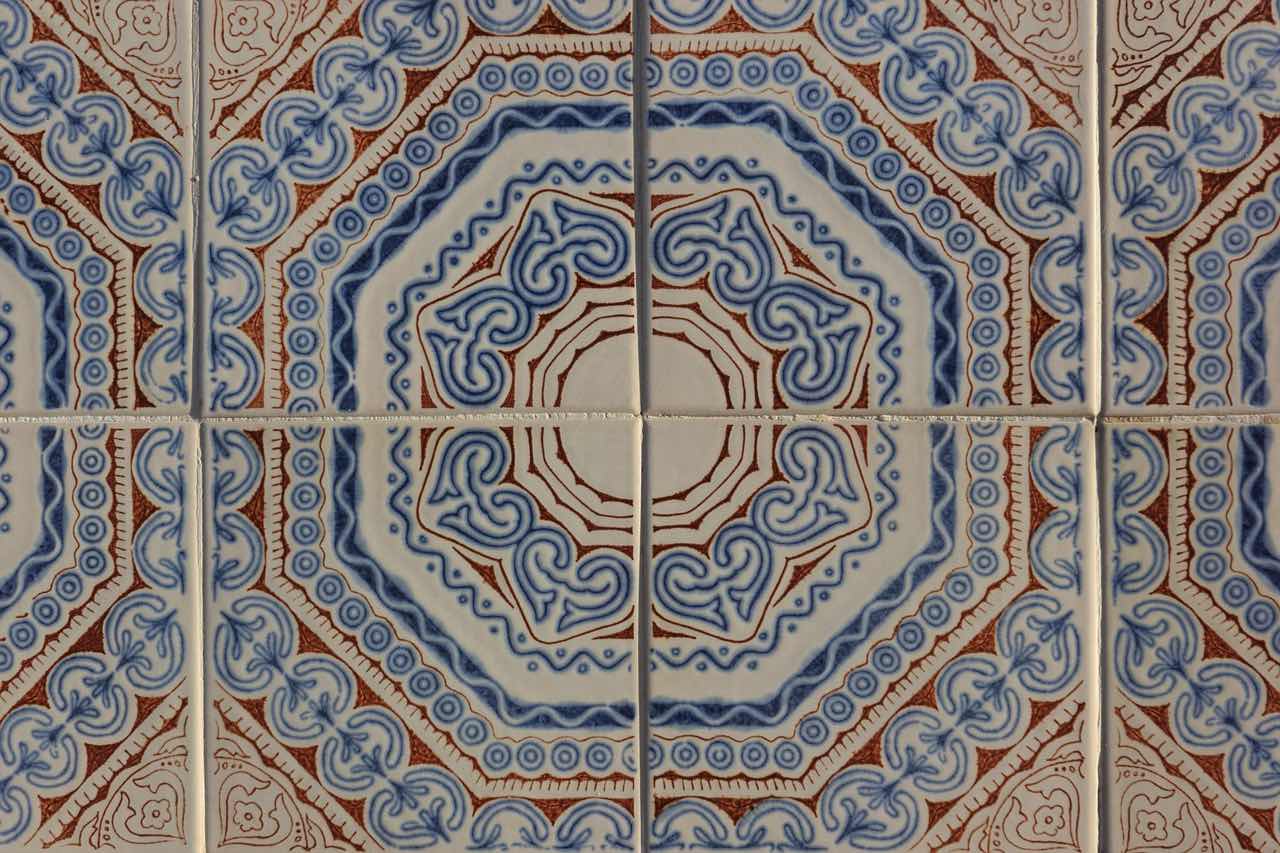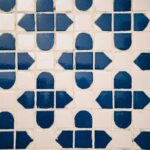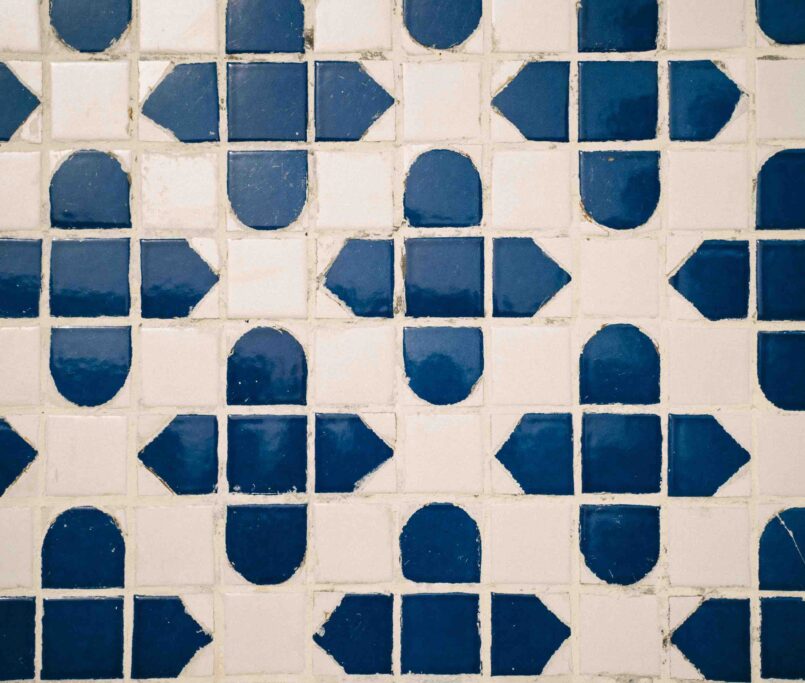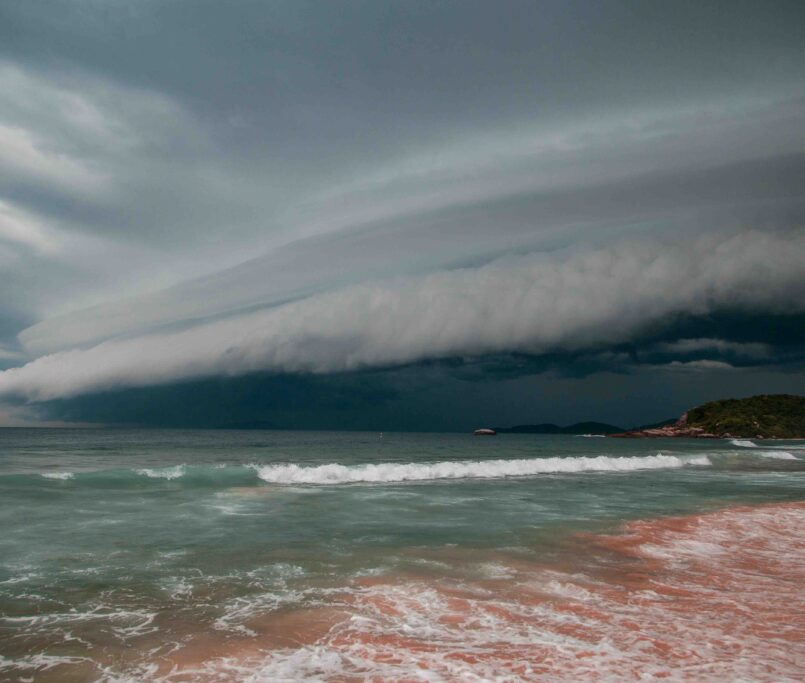Ceramic tiles are a reliable staple in Koh Samui villas, offering practical performance in humid, salt-laden environments. While vinyl, natural stone, and porcelain all have their place, ceramics balance cost, durability, and versatility. But not all tiles (or installations) are equal. This post looks at what works, what to avoid, and how to specify ceramic tiles correctly in a tropical design context.
Ceramic Tiles in Koh Samui’s Climate
Ceramic tiles with a glazed finish cope well with the island’s high humidity and heat. They are particularly suited to kitchens, bathrooms, and shaded outdoor areas where frequent moisture and cleaning are part of daily life.
Compared to vinyl or unsealed stone, glazed ceramics can resist mould, staining, and salt damage with minimal maintenance. Their surface remains cooler underfoot than plastic-based finishes, which is an advantage in non-air-conditioned spaces. For coastal villas, it’s important to specify salt-resistant glazes and to avoid highly absorbent unglazed tiles, which are prone to discolouration and failure in exposed locations.
One thing to note: bold colours can fade under intense UV, especially with cheaper glazes. Always test tile samples under local sunlight before committing, particularly for large surface areas.
Installation Essentials for Tropical Conditions
Correct installation is just as important as the tile itself. In Koh Samui’s climate, thermal expansion, humidity, and occasional salt spray all place demands on the substrate and adhesive system.
Start with a level, well-cured concrete base. Use water-resistant, flexible adhesives compatible with the local humidity levels. Allow movement with consistent grout lines and expansion joints where required. Tiles around 10 mm thick and grout widths around 3 mm are typically sufficient to absorb expansion in standard domestic settings.
Non-slip finishes should be used in all wet zones. In bathrooms, kitchens, or shaded verandas that may stay damp after rainfall, specify an R10 or higher slip resistance rating — or opt for matte or textured glazes for more natural grip.
Grout needs attention too. Choose formulations rated for tropical use, and reseal periodically to reduce the risk of moisture ingress. Regular cleaning with pH-neutral detergents is also recommended, as harsh cleaners can damage glazes and break down grout prematurely.
Ceramic vs Porcelain and Other Alternatives
Porcelain tiles are often viewed as the premium option due to their lower porosity and higher density. However, this comes with increased installation complexity and tool requirements. For high-exposure outdoor areas or commercial settings, porcelain may be worth the upgrade. For internal wet zones, good-quality glazed ceramics provide excellent performance at a lower cost and with simpler installation demands.
Vinyl flooring is sometimes used in budget builds but can sometimes lack thermal comfort, has a slightly shorter service life, and performs a little less effectively in very high humidity or salt air. Natural stone adds visual impact but demands sealing, regular maintenance, and structural allowances due to its weight — not always practical for smaller or elevated villas.
There are no general rules so it depends on your preference, budget and usage, but ceramics are a strong option for indoor wet zones and porcelain thrives in the exposed outdoor terraces. Vinyls have their place too as they are moisture resistant and very cost effective in some situations. Avoid unglazed ceramics anywhere moisture exposure is frequent.
Final Thoughts
Ceramic tiles remain one of the most practical choices for Koh Samui villas, provided they are well chosen, well detailed, and professionally installed. Their resistance to moisture, ease of maintenance, and cool surface underfoot suit the tropical lifestyle, while their versatility makes them a go-to material across a wide range of villa styles and budgets.
For more detail on tropical design strategies and the material choices that really matter in Samui’s climate, visit our blog or follow Nay on YouTube for insights shaped by years of building experience on the island. If you want to get in touch to discuss your project you can contact us here.

